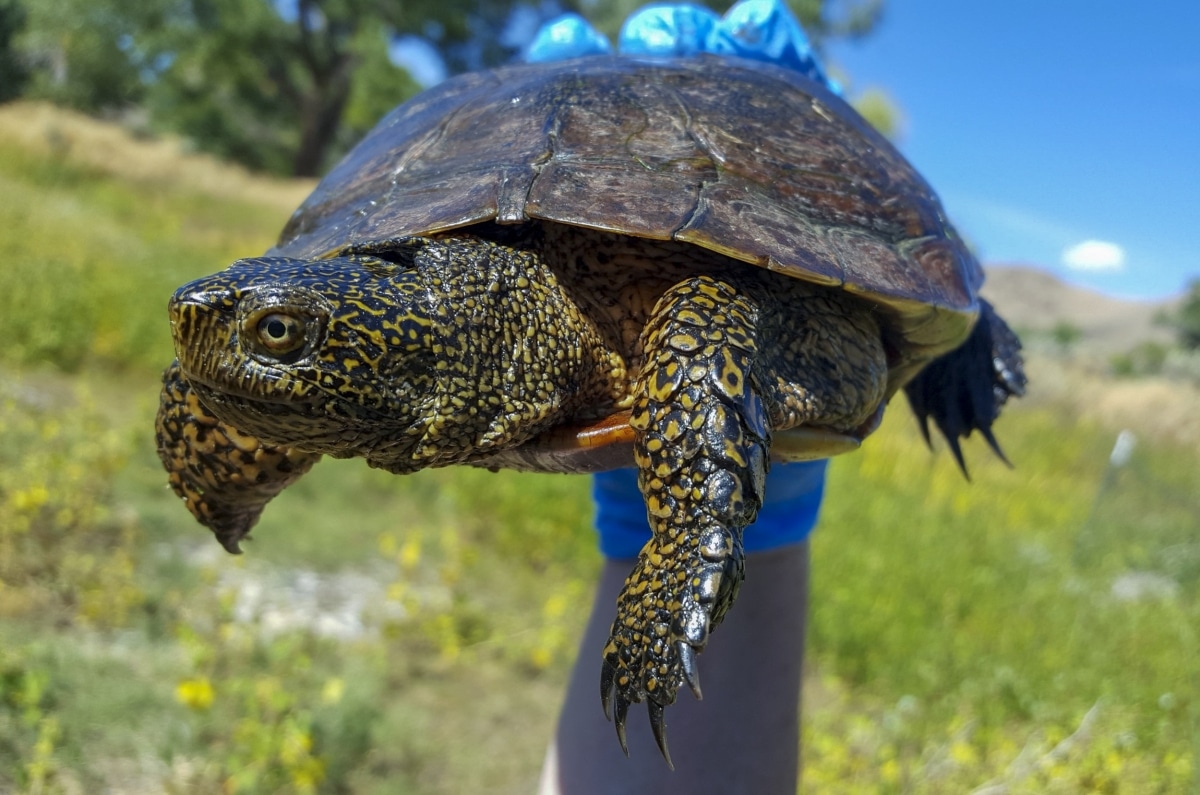The turtles collected from the wild nesting areas are reared at the zoo until they reach about 50 grams.
The Oregon Zoo announced that it released last week 11 northwestern pond turtles into the Columbia River Gorge. the effort, as part of the zoo’s head start program with this species, gathered newly hatched turtles in the wild and brought them to the zoo for about a year so they can get bigger. This makes them less susceptible to predation and enhances their chances in the wild.
“The turtles have been growing up in the lab since last fall,” Jen Osburn Eliot, of the Oregon Zoo said in a news release on the zoo’s website. “Now that they’re bigger, they have a much better chance of surviving in the wild.” “It’s much harder for a bullfrog to eat a big turtle than a little one,” Eliot said.
The turtles collected from the wild nesting areas are reared at the zoo until they reach about 50 grams. They are then taken to ponds that sit adjacent to the Columbia River Gorge and are then returned to their natural habitat and monitored by conservationists.
The western pond turtle is native to California and much of the West Coast of the United States. Listed as vulnerable by the IUCN, the western pond turtle is an omnivore, subsisting on insects, crayfish and other aquatic invertebrates as well as plant matter. They are also known to eat fish, tadpoles and dead animal matter. It is listed as an endangered species in Washington and a sensitive species in Oregon.
USFWS Reopens Public Comment Period On Western Pond Turtle Protections
Red-eared Sliders Don’t Transmit Disease To Western Pond Turtles
The effort to enhance the wild populations of these species is due to the Western Pond Turtle Recovery Project, which is a collaborative effort from entities that include the Oregon Zoo, Woodland Park Zoo, Washington Department of Fish and Wildlife, U.S. Fish and Wildlife Service, Bonneville Power Administration, U.S. Forest Service and others.



